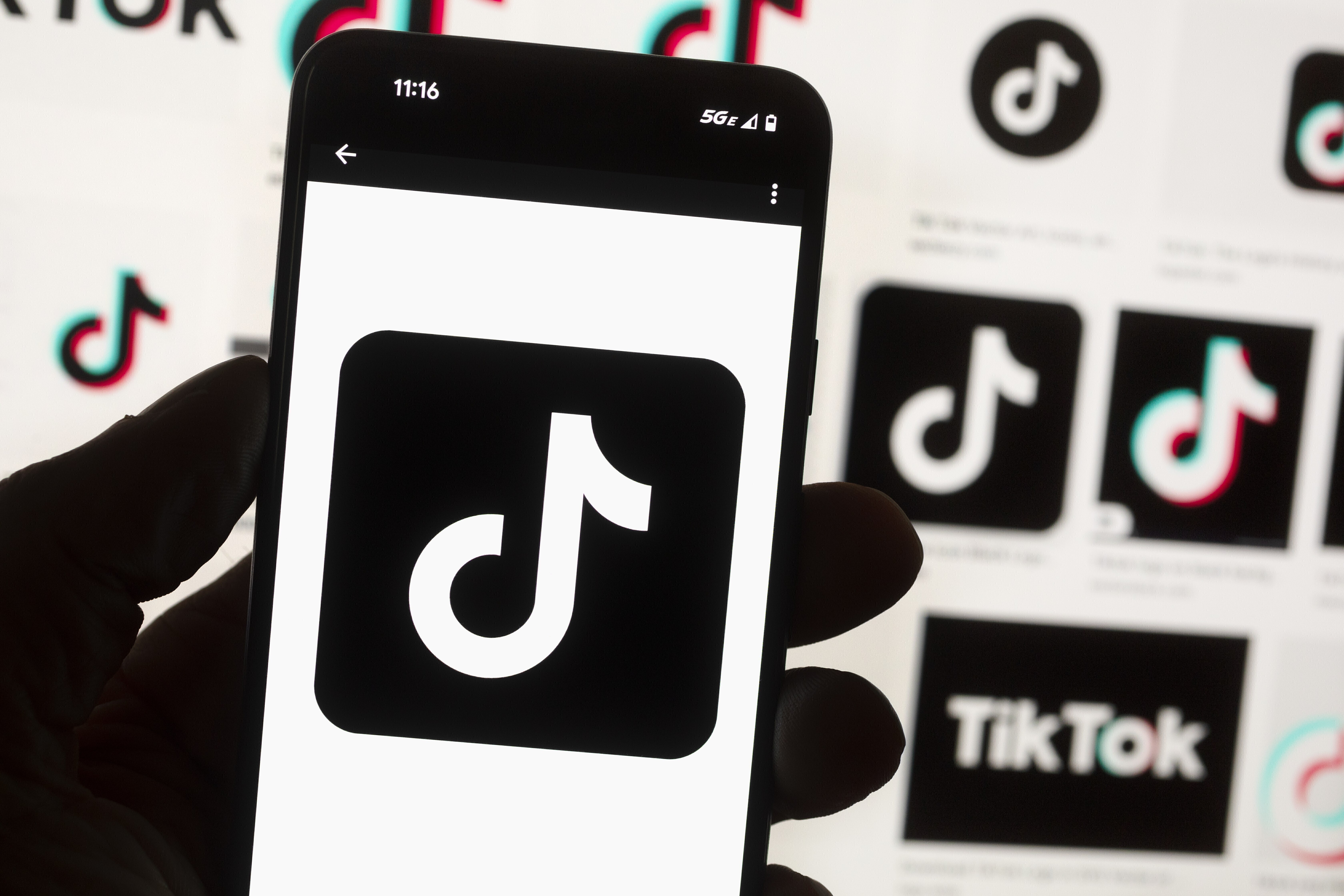
Russian state-affiliated accounts have boosted their use of TikTok and are getting more engagement on the short-form video platform ahead of the U.S. presidential election, according to a study published Thursday by the nonprofit Brookings Institution.
The report states that Russia is increasingly leveraging TikTok to disseminate Kremlin messages in both English and Spanish, with state-linked accounts posting far more frequently on the platform than they did two years ago.
[time-brightcove not-tgx=”true”]Such accounts are also active on other social media platforms and have a larger presence on Telegram and X than on TikTok. However, the report says user engagement — such as likes, views and shares — on their posts has been much higher on TikTok than on either Telegram or X.
“The use of TikTok highlights a growing, but still not fully realized, avenue for Russia’s state-backed information apparatus to reach new, young audiences,” reads the report, which drew data from 70 different state-affiliated accounts and was authored by Valerie Wirtschafter, a Brookings fellow in foreign policy and its artificial intelligence initiative.
The study notes that most posts do not focus on U.S. politics but other issues, like the war in Ukraine and NATO. However, those that do tend to feature more divisive topics like U.S. policy on Israel and Russia, and questions around President Joe Biden’s age, the Brookings report says.
A TikTok spokesperson said the company has removed covert influence operations in the past and eliminated accounts, including 13 networks operating from Russia.
The spokesperson said TikTok also labels state-controlled media accounts and will expand that policy in the coming weeks “to further address accounts that attempt to reach communities outside their home country on current global events and affairs.”
The Brookings report comes after Biden last month signed legislation forcing TikTok’s parent company — China-based ByteDance — to sell the platform or face a ban in the U.S. The potential ban is expected to face legal challenges.
Source: Tech – TIME | 2 May 2024 | 6:32 pm

Across social media, iPhone users have reported waking up to the scary realization that they had missed their alarm. “In the past six days of school, I’ve accumulated seven tardies,” said TikTok user CarterPCS. “I could’ve sworn it was because my alarm wasn’t going off.”
“I was literally late to work the other day because I slept through all four of my alarms that I had set,” TikTok user Charkaylotte recounted. “I was confused because I never sleep through my alarm.”
[time-brightcove not-tgx=”true”]In a news report posted on Tuesday, Apple told the Today Show that it was in fact aware of a glitch that is causing alarms to not make noise for many users. The company says that it is working on a fix, but it’s not clear when exactly that will be ready.
@charkaylotte #stitch with @Elizabeth now wtf is this shit apple? 🤨 | #xyzbca #fyp #apple #greenscreen
♬ original sound – charlotte 💋
@carterpcs Iphone Alarms ARENT GOING OFF #carterpcs #tech #techtok #gaming #techfacts #alarm #iphone #apple #ios
♬ Funny – Gold-Tiger
TIME has reached out to Apple for further information.
In the meantime, some social media users, including TikTok’s CarterPCS, have recommended changing settings to help fix the issue. Specifically, they have noted that Apple’s “Attention-Aware Features,” which make your phone automatically brighten its screen and lower the volume while you are looking at it, may be causing the problem.
To turn off the “Attention-Aware Features,” go to “Settings” and then select “Face ID & Passcode.” You will be prompted to enter your passcode, after which you should be able to scroll down and see the option to toggle the features on or off. Turn them off to see if it helps fix your alarm clock issues.
Source: Tech – TIME | 2 May 2024 | 9:51 am
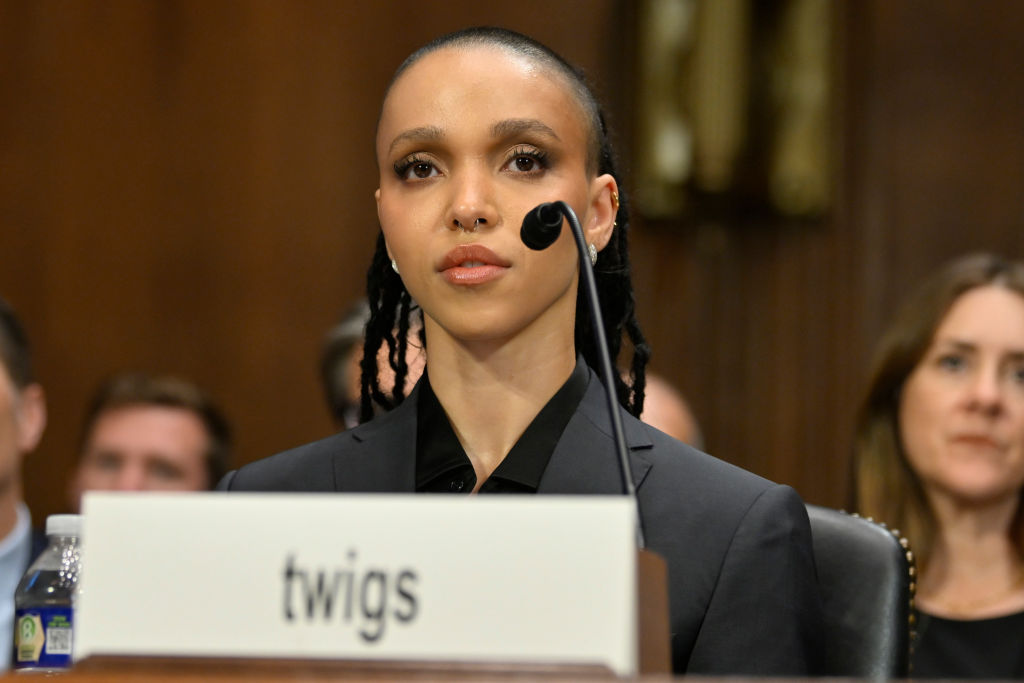
British singer-songwriter FKA twigs, born Tahliah Debrett Barnett, testified before the U.S. Senate Judiciary Subcommittee on Intellectual Property on Tuesday about the dangers of artificial intelligence. She relayed that she was especially concerned as an artist whose music and performances are used by third parties to train artificial intelligence models. She said that the power of this technology has become especially apparent to her as she has attempted to build a deepfake version of herself.
[time-brightcove not-tgx=”true”]“In the past year, I have developed my own deepfake version of myself that is not only trained in my personality, but also can use my exact tone of voice to speak many languages,” the singer said in her statement. “I will be engaging my ‘AI twigs’ later this year to extend my reach and handle my online social media interactions, whilst I continue to focus on my art from the comfort and solace of my studio.”
FKA twigs stressed that in certain cases, deepfake technology can be useful and practical, so long as it is used with the consent of the person it is imitating. “These and similar emerging technologies are highly valuable tools both artistically and commercially when under the control of the artist. What is not acceptable is when my art and my identity can simply be taken by a third party and exploited falsely for their own gain without my consent due to the absence of appropriate legislative control,” she argued.
The musician especially encouraged those in power to enact legislation to control deepfake technology, and warned them not to repeat the mistakes made when the internet was first invented. “Three decades ago, we did not realize that the internet would embed itself so deeply into the core of our everyday lives. Policies and controls to keep pace with the emergence of the technology were not put in place to protect artists, young people, those who are vulnerable,” she said.
FKA twigs is not the only person to voice concern about the use of personal intellectual property by generative AI companies. On Tuesday, a group of eight American newspapers announced that they would be suing Microsoft and Open AI, the maker of ChatGPT, for using their work as training data without consent.
The U.S. still does not have any federal laws criminalizing the use of deepfake technology without the permission of the person being impersonated. This has been particularly harmful for people in abusive relationships, who are increasingly becoming victims of revenge pornography using deepfake technology.
Earlier this year, deepfake pornographic images of Taylor Swift were widely circulated across social media platform X (formerly Twitter), highlighting the need for new legal protections. Content moderators took them down, bringing the issue to the attention of the public.
Source: Tech – TIME | 1 May 2024 | 11:06 am
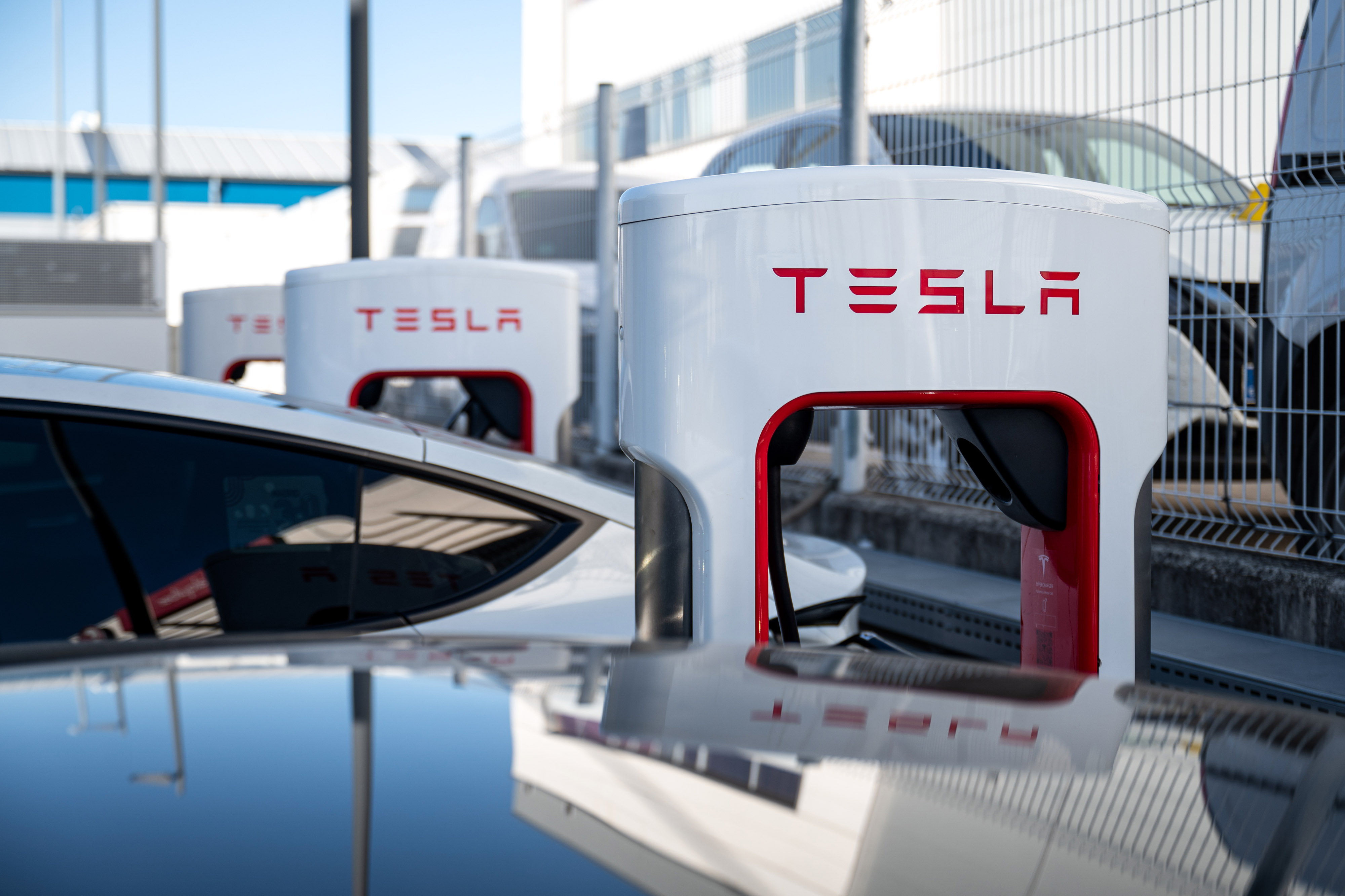
Tesla Inc. eliminated almost its entire Supercharger organization, which has built a vast network of public charging stations that virtually every major automaker is in the process of tapping into in the US.
The decision to cut the nearly 500-person group, including its senior director, Rebecca Tinucci, was made by Chief Executive Officer Elon Musk in the last week, according to a person familiar with the matter. It comes in addition to the more than 10% staff cut ordered in mid-April, the person said.
[time-brightcove not-tgx=”true”]The move will slow the network’s growth, according to a person familiar with the division, who asked not to be identified discussing private matters. There are already discussions about rehiring some of those impacted in order to operate the existing network and grow it at a much slower rate, the person said. In a post on X, Musk confirmed network growth would slow.
The job cuts have left executives at at least one other automaker, Rivian Automotive Inc., confused and concerned, according to another person familiar with internal company discussions. Rivian, Ford Motor Co. and General Motors Co. are among the carmakers adopting Tesla’s charging connectors for their battery-powered cars, giving thousands of customers access to the Tesla charging network.
Vehicles from those automakers were initially designed to use a standard called the Combined Charging System. There are fewer CCS chargers in the US than Tesla Superchargers, which use what Tesla has called the North American Charging Standard. Tesla’s infrastructure is also considered faster and more reliable.
The job eliminations mean Rivian, Ford and others have lost their main points of contact in Tesla’s charging unit shortly before the kickoff of the busy summer driving season. Tinucci was one of the main executives building and managing outside partnerships and was thought of highly, two people who had worked with her inside and outside of Tesla said.
Bloomberg confirmed that Tinucci was no longer listed on internal organizational charts as of Tuesday. One of Tesla’s highest-ranking female executives, she spoke at the company’s Investor Day in March 2023. She didn’t respond to requests for comment.
Some of the Supercharger servicing team, which manages third-party access to the network, remains intact, according to one of the people. Tesla has been building CCS-to-NACS adapters in Buffalo, New York, and shipping them to partnering carmakers. Companies that have signed charging contracts with Tesla are mostly using the adapters as a short-term fix. For example, Ford EV customers can use the Supercharger network with an adapter now, and the technology will be built into the vehicles beginning in 2025.
Rivian and Ford are both still shipping adapters to their customers, according to statements from the companies. Ford told its EV owners on Friday, before the elimination of the broader Tesla Supercharger team, deliveries may be delayed in some cases due to “constraints” with the supplier.
Easy access to high-speed charging is widely seen as critical to EV adoption, and Tesla invested billions of dollars into developing a global network of Superchargers that became the envy of other automakers. It’s also a critical component of Tesla sales, and the carmaker said the division was growing during its first-quarter results last week.
“Starting at the end of February, we began opening our North American Supercharger Network to more non-Tesla EV owners,” Tesla wrote in its shareholder deck.
The Musk-led company has also signed charging partnerships with carmakers including Stellantis NV, Volvo, Polestar, Kia, Honda, Mercedes-Benz and BMW. It’s not clear who will now oversee Tesla’s partnerships with those companies. GM, Volvo and Polestar were all due to open NACS chargers to their customers in the immediate future, according to Tesla’s website.
Tesla had 6,249 Supercharger stations and more than 57,000 connectors as of the end of the first quarter. It has more fast chargers in the US than all other providers combined, according to BloombergNEF.
The Information first reported the Supercharger team cuts, citing a memo from Elon Musk.
Source: Tech – TIME | 30 Apr 2024 | 7:50 pm
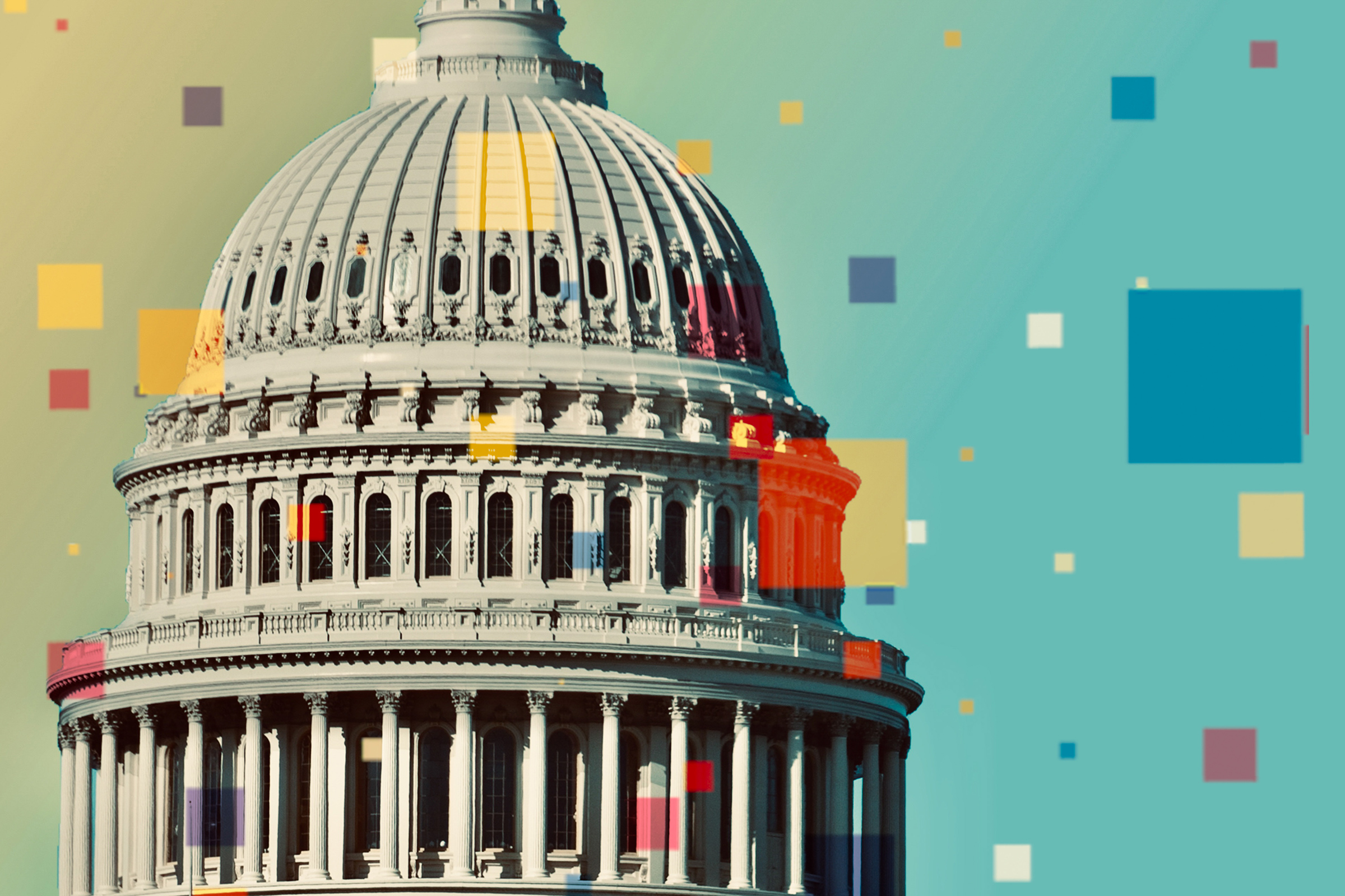
The number of groups lobbying the U.S. federal government on artificial intelligence nearly tripled from 2022 to 2023, rocketing from 158 to 451 organizations, according to data from OpenSecrets, a nonprofit that tracks and publishes data on campaign finance and lobbying. Data on the total amount spent on lobbying by each organization and interviews with two congressional staffers, two nonprofit advocates familiar with AI lobbying efforts, and two named experts suggest that large technology companies have so far dominated efforts to influence potential AI legislation. And while these companies have publicly been supportive of AI regulation, in closed-door conversations with officials they tend to push for light-touch and voluntary rules, say Congressional staffers and advocates.
[time-brightcove not-tgx=”true”]In November 2022, OpenAI released its wildly popular chatbot, ChatGPT. Six months later, leading AI researchers and industry executives signed a statement warning that “the risk of extinction from AI should be a global priority alongside other societal-scale risks such as pandemics and nuclear war.” Lawmakers around the world sat up and took notice. U.S. President Joe Biden signed a sweeping AI Executive Order; the E.U. modified its landmark AI law to ensure the models that power chatbots like ChatGPT are regulated; and the U.K. government convened the world’s first AI Safety Summit.
Read More: The 3 Most Important AI Policy Milestones of 2023
While Congress has yet to pass any AI-specific legislation, there has been a flurry of AI-related activity on the Hill, with Senate Majority Leader Chuck Schumer convening “Insight Forums” to educate Congress on the rapidly-evolving technology. As substantial federal AI legislation began to be seen as a possibility, lobbyists flooded into the Capitol to promote their organizations’ interests.
“Obviously Congress has been writing bills on AI for a long, long time—this is not new. What’s new is the scale at which Congress is writing bills and putting them out,” says Divyansh Kaushik, a vice president at D.C.-based advisory firm Beacon Global Strategies. “That’s what’s driving a lot of this engagement.”
New faces
Of the 451 organizations that lobbied on AI in 2023, 334—nearly three quarters of the total number—did so for the first time in 2023. Present in the crowd of new organizations pushing for time with staffers and lawmakers on the Hill were the relatively young companies building the most advanced AI models, such as OpenAI, Anthropic, and Cohere.
The OpenSecrets data is an imperfect measure; it tracks AI-specific lobbying by searching the lobbying disclosure forms that organizations are required to file quarterly for the words “artificial intelligence” or “AI.” Two Congressional staffers TIME spoke with suggested that the number of lobbyists they personally had met with remained roughly the same. However, they said AI has become a much more common topic of discussion. “Everybody who comes in and talks to us and wants to talk about AI,” said one Congressional staffer, who asked to remain anonymous as they weren’t authorized to speak about discussions with lobbyists and advocates.
For example, companies such as payment card company Visa, pharmaceutical conglomerate GSK, and accounting firm Ernst and Young began to mention AI in their lobbying disclosure forms. Company interests were also represented by industry trade associations, such as BSA The Software Alliance. Venture capital firm Andreessen Horowitz and startup accelerator Y Combinator also lobbied on AI for the first time in 2023, according to the OpenSecrets analysis.
Many civil society organizations lobbied on AI issues for the first time in 2023, too. The American Federation of Labor and Congress of Industrial Organizations—the largest U.S. federation of trade unions—joined the fray, as did top civil rights organization the NAACP. More tech-focused civil society organizations, such as the Omidyar Network and the Mozilla Foundation also joined the fray. Non-profit organizations focused on threats that future AI systems could pose to public safety such as the Center for AI Policy and the Center for AI Safety Action Fund also filed lobbying disclosures for the first time this year. Finally, a number of universities, such as the Massachusetts Institute of Technology and Yale University reported lobbying on AI in 2023.
Big Tech’s deep pockets
All organizations that carry out lobbying, the legal definition of which only includes directly discussing specific laws or regulations, are required to report how much they spent on lobbying. However, this data is only reported as a general total figure, meaning it’s impossible to know how much of this total amount each organization is spending on AI-related lobbying specifically, versus other policy issues. But by this crude metric, many of the newcomers are significantly outspent by the big technology companies, which have been ramping up their lobbying expenditures for a decade.
In 2023, Amazon, Meta, Google parent company Alphabet, and Microsoft each spent more than $10 million on lobbying, according to data provided by OpenSecrets. The Information Technology Industry Council, a trade association, spent $2.7 million on lobbying. In comparison, civil society group the Mozilla Foundation spent $120,000 and AI safety nonprofit the Center for AI Safety Action Fund spent $80,000.
Given that the definition of lobbying only includes speaking with staffers about specific laws, these figures likely underestimate the amounts of money that tech companies are spending to influence lawmakers, says Hamza Chaudhry, a U.S. Policy Specialist at the Future of Life Institute, a nonprofit that focuses on risks posed by advanced technologies.
Multiple advocates and Hill sources suggested that the consistently large amounts spent by the big technology companies has allowed them to build up a sophisticated lobbying apparatus that has so far outgunned the efforts of other organizations. “There’s been a sprouting up of all these AI safety lobby groups and also lots of civil society groups that now are starting up their AI focuses, but by far the best at it are the tech groups,” said another Congressional staffer, who also wished to remain anonymous because they weren’t authorized to speak about discussions with lobbyists and advocates. Tech companies are able to spend more and thus pay for more experienced lobbyists, who better understand the technical details of their brief better and have a more extensive network on the Hill, the staffer said.
“I would still say that civil society—and I’m including academia in this, all sorts of different people—would be outspent by big tech by five to one, ten to one,” says Chaudhry.
Public statements vs. private lobbying
What exactly is the tech industry lobbying for? Some in the industry are against regulating AI, arguing that regulation would impede technological progress. In December 2023, Ben Horowitz, co-founder of venture capital firm Andreessen Horowitz, wrote a blog post that said his firm would support any political candidate who opposed regulation that would stifle innovation.
But, many of the companies involved in the development of AI have, at least in public, struck a cooperative tone when discussing potential regulation. Executives from the newer companies that have developed the most advanced AI models, such as OpenAI CEO Sam Altman and Anthropic CEO Dario Amodei, have called for regulation when testifying at hearings and attending Insight Forums. Executives from the more established big technology companies have made similar statements. For example, Microsoft vice chair and president Brad Smith has called for a federal licensing regime and a new agency to regulate powerful AI platforms. Both the newer AI firms and the more established tech giants signed White House-organized voluntary commitments aimed at mitigating the risks posed by AI systems.
But in closed door meetings with Congressional offices, the same companies are often less supportive of certain regulatory approaches, according to multiple sources present in or familiar with such conversations. In particular, companies tend to advocate for very permissive or voluntary regulations. “Anytime you want to make a tech company do something mandatory, they’re gonna push back on it,” said one Congressional staffer.
Others, however, say that while companies do sometimes try to promote their own interests at the expense of the public interest, most lobbying helps to produce sensible legislation. “Most of the companies, when they engage, they’re trying to put their best foot forward in terms of making sure that we’re bolstering U.S. national security or bolstering U.S. economic competitiveness,” says Kaushik. “At the same time, obviously, the bottom line is important.”
There is little time left for Congress to pass an AI-related bill before the presidential election. Whether an AI law is passed in the next few months, or not until the 119th Congress, lobbying efforts from all parties are only likely to increase as the legislation draws nearer.
More From TIME
Source: Tech – TIME | 30 Apr 2024 | 1:05 pm
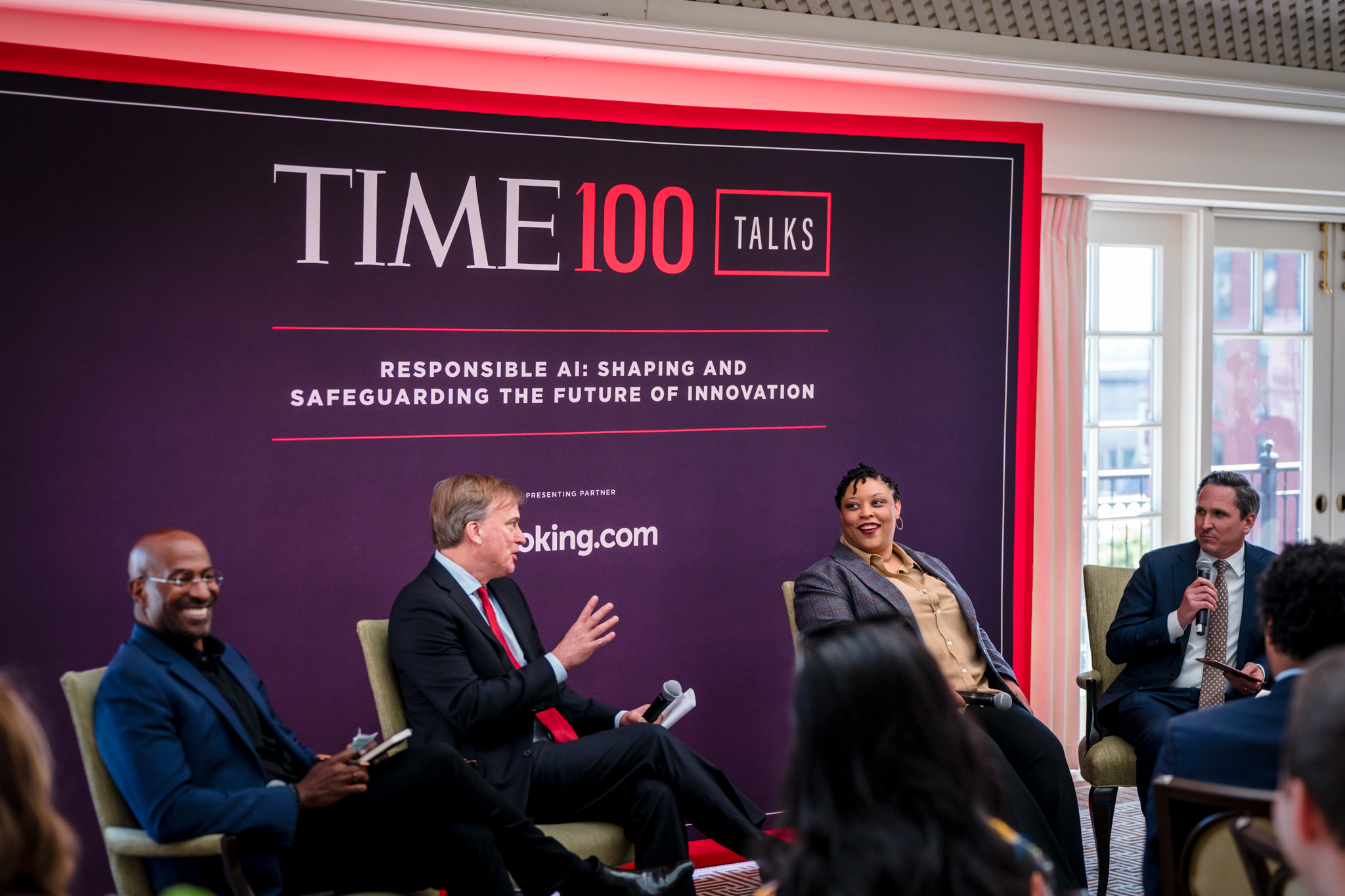
Artificial intelligence has been a tricky subject in Washington.
Most lawmakers agree that it poses significant dangers if left unregulated, yet there remains a lack of consensus on how to tackle these concerns. But speaking at a TIME100 Talks conversation on Friday ahead of the White House Correspondents Dinner, a panel of experts with backgrounds in government, national security, and social justice expressed optimism that the U.S. government will finally “get it right” so that society can reap the benefits of AI while safeguarding against potential dangers.
[time-brightcove not-tgx=”true”]“We can’t afford to get this wrong—again,” Shalanda Young, the director of the Office of Management and Budget in the Biden Administration, told TIME Senior White House Correspondent Brian Bennett. “The government was already behind the tech boom. Can you imagine if the government is a user of AI and we get that wrong?”
Read More: A Call for Embracing AI—But With a ‘Human Touch’
The panelists agreed that government action is needed to ensure the U.S. remains at the forefront of safe AI innovation. But the rapidly evolving field has raised a number of concerns that can’t be ignored, they noted, ranging from civil rights to national security. “The code is starting to write the code and that’s going to make people very uncomfortable, especially for vulnerable communities,” says Van Jones, a CNN host and social entrepreneur who founded the Dream Machine, a non-profit that fights overcrowded prisons and poverty. “If you have biased data going in, you’re going to have biased decision-making by algorithms coming out. That’s the big fear.”
The U.S. government might not have the best track record of keeping up with emerging technologies, but as AI becomes increasingly ubiquitous, Young says there’s a growing recognition among lawmakers of the need to prioritize understanding, regulation, and ethical governance of AI.
Michael Allen, managing director of Beacon Global Strategies and Former National Security Council director for President George W. Bush, suggested that in order to address a lack of confidence about the use of artificial intelligence, the government needs to ensure that humans are at the forefront of every decision-making process involving the technology—especially when it comes to national security. “Having a human in the loop is ultimately going to make the most sense,” he says.
Asked how Republicans and Democrats in Washington can talk to each other about tackling the problems and opportunities that AI presents, Young says there’s already been a bipartisan shift around science and technology policy in recent years—from President Biden’s signature CHIPS and Science Act to funding for the National Science Foundation. The common theme behind the resurgence in this bipartisan support, she says, is a strong anti-China movement in Congress.
“There’s a big China focus in the United States Congress,” says Young. “But you can’t have a China focus and just talk about the military. You’ve got to talk about our economic and science competition aspects of that. Those things have created an environment that has given us a chance for bipartisanship.”
Allen noted that in this age of geopolitical competition with China, the U.S. government needs to be at the forefront of artificial intelligence. He likened the current moment to the Nuclear Age, when the U.S. government funded atomic research. “Here in this new atmosphere, it is the private sector that is the primary engine of all of the innovative technologies,” Allen says. “The conventional wisdom is that the U.S. is in the lead, we’re still ahead of China. But I think that’s something as you begin to contemplate regulation, how can we make sure that the United States stays at the forefront of artificial intelligence because our adversaries are going to move way down the field on this.”
Congress is yet to pass any major AI legislation, but that hasn’t stopped the White House from taking action. President Joe Biden signed an executive order to set guidelines for tech companies that train and test AI models, and has also directed government agencies to vet future AI products for potential national security risks. Asked how quickly Americans can expect more guardrails on AI, Young noted that some in Congress are pushing to establish a new, independent federal agency that can help inform lawmakers about AI without a political lens, offering help on legislative solutions.
“If we don’t get this right,” Young says, “how can we keep trust in the government?”
TIME100 Talks: Responsible A.I.: Shaping and Safeguarding the Future of Innovation was presented by Booking.com.
Source: Tech – TIME | 26 Apr 2024 | 9:55 pm

WhatsApp, the popular global messaging platform owned by Meta, has rolled out new features including a different way to log in and an artificial intelligence assistant in the app.
iPhone users can now use passkeys to login—which means they can access the app using Face ID, Touch ID, or their iPhone passcode—instead of receiving an SMS to log in.
[time-brightcove not-tgx=”true”]Whatsapp said on X, formerly Twitter, on April 24 that this feature was “a more secure way to login.” It also avoids any potential challenges in receiving an SMS to log in, with the company adding: “traveling? no network? no problem.”
The messaging app already launched passkeys for Android users in October, as demonstrated by a post shared on Threads, another Meta social media platform.
People with Pixel 8 and 8 Pro Google phones can now also use Face Unlock, instead of their fingerprint or PIN, to unlock and view messages on WhatsApp, as reported by 9to5Google.
Another change also arrived recently to the messaging app. On April 18, Meta expanded a new AI assistant across its social platforms—Facebook, Instagram, Messenger, and WhatsApp.
Users can employ the assistant, called Meta Llama 3, in feeds, chats, and search across the apps to get information and generate images “without having to leave the app you’re using,” the company said.
Meta AI in English is now available in more than a dozen countries outside of the U.S.—Australia, Canada, Ghana, Jamaica, Malawi, New Zealand, Nigeria, Pakistan, Singapore, South Africa, Uganda, Zambia, and Zimbabwe.
Source: Tech – TIME | 26 Apr 2024 | 8:40 am

On Wednesday, Joe Biden signed into law a bill that could lead to TikTok being banned in the U.S. if ByteDance, the app’s Chinese-owned parent company, does not sell it within a year. Lawmakers are increasingly worried that the app could pose national security concerns to the U.S. if the Chinese government were to access data collected by the app.
[time-brightcove not-tgx=”true”]TikTok’s CEO, Shou Zi Chew, spoke in front of Congress in January of this year, defending the platform’s position. “We have not been asked for any data by the Chinese government and we have never provided,” he testified.
Nevertheless, despite the CEO’s assurances, many governments around the world remain unconvinced, and have instituted their own TikTok bans and restrictions.
Here are all the countries that have banned or partially banned the app:
Afghanistan
The Taliban government banned TikTok in April 2022, saying that the application was “misleading youths.”
Armenia
Armenia reportedly temporarily blocked TikTok for multiple days during border clashes with Azerbaijan in September 2022.
Australia
TikTok was banned from Australian government devices in April 2023, but is still allowed on devices belonging to the general public.
Austria
Austria has banned TikTok from all government employee devices as of May 2023.
Azerbaijan
Azerbaijan blocked TikTok temporarily during border clashes with Armenia in September 2022. The application was blocked again one year later due to “anti-terrorist measures” according to Armenian local media. It was restored again on October 1, 2023.
Bangladesh
In August 2021, a Bangladeshi court ordered the government to remove TikTok and several other apps from the country’s app store in order to “save children and adolescents from moral and social degradation.” The application was later allowed to return, providing its content moderation was in line with Bangladesh’s cultural sensibilities.
Belgium
In March 2024, the Belgian government announced that it was banning the app from all government devices. “The safety of our information must prevail,” said Belgian Prime Minister Alexander De Croo. TikTok is still available on non-government affiliated devices.
Canada
Canada banned TikTok from all government-issued mobile devices in February 2023. “I suspect that as the government takes the significant step of telling all federal employees that they can no longer use TikTok on their work phones, many Canadians from business to private individuals will reflect on the security of their own data and perhaps make choices,” Prime Minister Justin Trudeau said when the ban was announced.
China
China itself does not permit the international version of TikTok to be used on the mainland. Instead, users must download Douyin, the Chinese version of TikTok which is subject to censorship from the Chinese Communist Party.
Denmark
Denmark’s Ministry of Defense banned the app from its employees’ work phones in March 2023. The country’s main public service broadcaster also instituted special protocols that mean journalists need special approval in order to use the app for reporting purposes following a warning from Denmark’s Center for Cybersecurity.
Estonia
TikTok was banned from the work phones of state officials in Estonia in March 2023.
European Union
The three main institutions that make up the E.U.–the European Parliament, European Commission and the E.U. Council–have all banned TikTok from employees’ work phones. Employees are also advised to remove the app from their personal devices.
France
France has banned several social media applications from government employees’ phones including Twitter, Instagram, and TikTok as of March 2023.
India
India is one of a handful of countries that has completely banned TikTok, including on citizens’ personal devices. The ban was implemented in July 2020 after a border clash between China and India left 20 Indian soldiers dead. The two countries have had an ongoing centuries over their border that occasionally turns violent. In the aftermath of the 2020 border clash, some Indians called for a boycott of Chinese goods, and India’s information technology ministry put out a statement claiming that certain mobile applications were “stealing and surreptitiously transmitting users’ data.” After the ban, many creators migrated to YouTube Shorts and Instagram Reels.
Indonesia
Indonesia banned TikTok Shop, a portion of the application that allows creators to sell products to their audiences, in October 2023 for violating the country’s e–commerce laws.
Iran
The Islamic Republic bans TikTok along with other internationally popular social media platforms including X and Facebook.
Ireland
TikTok was banned from government devices in Ireland in April 2023.
Jordan
TikTok has been banned in the Kingdom of Jordan since December 2022, after a police officer was killed during a protest and videos of the event flooded social media.
Kyrgyzstan
The small, formerly Soviet country banned Tiktok in August 2023, arguing that the application was harmful to the development of children.
Latvia
The app is prohibited on work phones in Latvia’s Foreign Ministry as of March 2023.
Malta
Tiktok is blocked from government-provided cell phones along with all other non-government applications in Malta.
The Netherlands
The Dutch government banned the app from employees’ work phones in March 2023. The relationship between Amsterdam and Beijing has soured in the last year after a Dutch intelligence agency called China “the biggest threat to the Dutch economic security,” per Bloomberg.
Nepal
Nepal banned TikTok for all its citizens in November 2023, saying the app was “detrimental to social harmony.”
New Zealand
Lawmakers and parliament employees in New Zealand were prohibited from having TikTok on their work phones as of March 2024. However, exceptions can be made if a lawmaker believes TikTok is necessary for their democratic duties, per the AP. The ban does not apply to employees in other branches of the government.
North Korea
North Korea restricts most of its citizens from accessing the internet. A few websites and apps are permitted for the privileged elite to visit, but TikTok is not among them.
Norway
The Norwegian parliament banned TikTok from employees’ work devices in March 2023. Municipal employees in the cities of Oslo and Bergen have also been encouraged to remove the app from their devices. “Norwegian intelligence services single out Russia and China as the main risk factors for Norway’s security interests,” said Justice Minister Emilie Enger Mehl in a statement, per EuroNews.
Pakistan
Pakistan has banned TikTok temporarily at least four times. However, the application was restored in November 2021, and has reportedly been available in the country since then.
Russia
Currently, Russians are restricted in terms of what they can view on TikTok, and viewers primarily only see videos made by Russian creators. This month, it has been reported that the Russian government intends to ban TikTok in order to encourage citizens to use domestic social media platforms, instead.
Senegal
Senegal instituted a total ban of the application in August after an opposition candidate was accused of using the platform to spread “hateful and subversive messages.” The government of Senegal has refused to reinstate the app unless a mechanism is developed that allows the government to remove specific accounts.
Somalia
In August 2023, the Somali government announced that it was banning TikTok, Telegram, and the online betting website 1XBet. Minister of Communications Jama Hassan Khalif said that the apps were used for dangerous propaganda. “The Minister of Communications orders internet companies to stop the aforementioned applications, which terrorists and immoral groups use to spread constant horrific images and misinformation to the public,” the minister said in a statement, per Reuters.
Taiwan
Taiwan banned all government devices from using Chinese-made software, including TikTok, in December 2022 after a warning from the FBI.
United Kingdom
In March 2023, the U.K. banned all government employees from using TikTok on government provided mobile devices. “Given the particular risk around government devices, which may contain sensitive information, it is both prudent and proportionate to restrict the use of certain apps, particularly when it comes to apps where a large amount of data can be stored and accessed,” Cabinet Office minister Oliver Dowden told parliament.
United States
Congress and the armed forces have banned TikTok from all of their employees’ devices. Approximately half of all states ban the app on state-owned devices, and the Federal government similarly banned the app from employees’ devices in March 2023.
Uzbekistan
TikTok has been unavailable in Uzbekistan since July 2021, after the authorities said the app was not compliant with the country’s personal data protection laws.
Source: Tech – TIME | 25 Apr 2024 | 2:01 pm
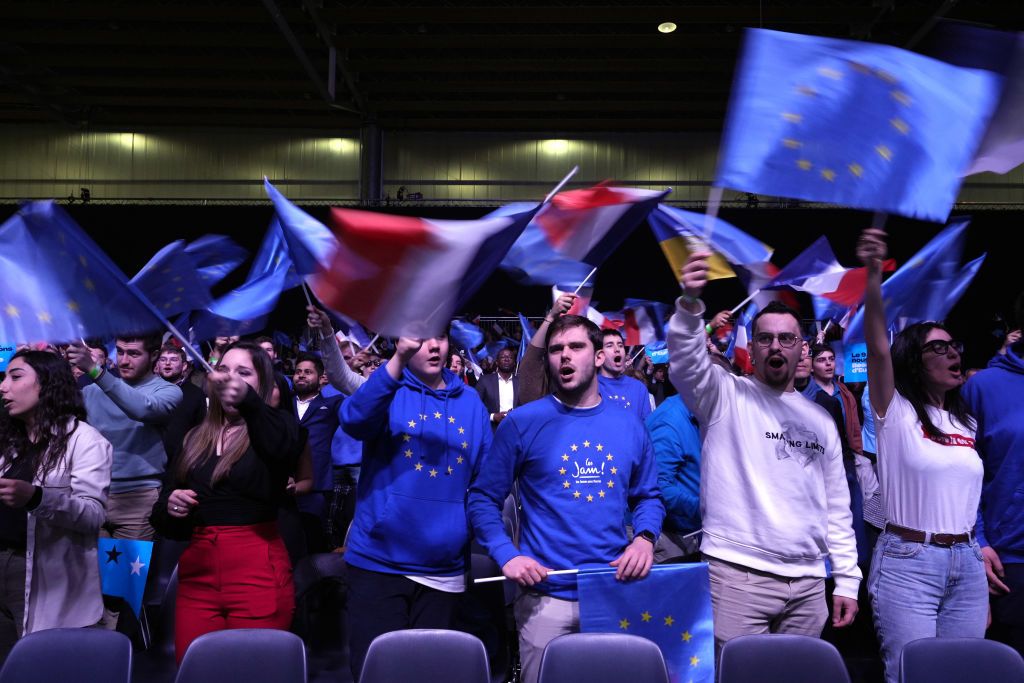
“We are all at risk of manipulation online right now.”
So begins a short animated video about a practice known as decontextualization and how it can be used to misinform people online. The video identifies signs to watch out for, including surprising or out of the ordinary content, seemingly unreliable sources, or video or audio that appear to have been manipulated or repurposed.
[time-brightcove not-tgx=”true”]Though it may not look like it, this 50-second video is actually an election ad—one of three that Google will be rolling out across five European countries next month in advance of the European Union’s June parliamentary elections. But unlike traditional election ads that are designed to persuade people how to vote, these are seeking to educate voters about how they could be misled. It’s an initiative that Google describes as preventative debunking—or, more simply, “prebunking.”
“It works like a vaccine,” Beth Goldberg, the head of research at Google’s internal Jigsaw unit, which was founded in 2010 with a remit to address threats to open societies, tells TIME. By enabling prospective voters to recognize common manipulation techniques that could be used to mislead them—such as scapegoating or polarization—Goldberg says that prebunking “helps people to gain mental defenses proactively.”
Concerns about AI-generated disinformation and the impact it stands to have on contests around the world continues to dominate this year’s election megacycle. This is particularly true in the E.U., which recently passed a new law compelling tech firms to increase their efforts to clamp down on disinformation amid concerns that an uptick in Russian propaganda could distort the results.
Contrary to what one might expect, prebunking ads aren’t overtly political nor do they make any allusions to any specific candidates or parties. In the video about decontextualization, for example, viewers are shown a hypothetical scenario in which an AI-generated video of a lion set loose on a town square is used to stoke fear and panic. In another video, this time about scapegoating, they are shown an incident in which a community lays sole blame on another group (in this case, tourists) for the litter in their parks without exploring other possible causes.
The beauty of this approach, Goldberg notes, is that it needn’t be specific. “It doesn’t have to be actual misinformation; you can just show someone how the manipulation works,” she says, noting that keeping the content general and focusing on manipulation strategies, rather than the misinformation itself, allows these campaigns to reach people regardless of their political persuasion.
While Google’s prebunking campaign is relatively new, the tactic is not. Indeed, the concept dates back to the 1960s, when the social psychologist William McGuire sought to understand people’s susceptibility to propaganda during the Cold War and whether they could be defended against it. This culminated in what McGuire called “inoculation theory,” which rested on the premise that false narratives, like viruses, can be contagious and that by inoculating people with a dose of facts, they can become less susceptible. But it wasn’t until decades later that the theory began being applied to online information. In recent years, Jigsaw has conducted prebunking initiatives in Eastern Europe and Indonesia. Its forthcoming European campaign, which formally kicks off in May, will primarily be disseminated as short ads on YouTube and Meta platforms targeting voters in Belgium, France, Germany, Italy, and Poland. Afterwards, viewers will be invited to take a short, multiple-choice survey testing their ability to identify the manipulation technique featured in the ad.
Read More: Inside the White House Program to Share America’s Secrets
Whereas prebunking doesn’t necessarily face as much resistance as more conventional forms of combating misinformation such as fact checking or content moderation, which some critics have likened to censorship, it isn’t a panacea either. Jon Roozenbeek, an assistant professor in psychology and security at King’s College London who has spent years working with Jigsaw on prebunking, tells TIME that one of the biggest challenges in these campaigns is ensuring that the videos are captivating enough to hold viewers’ attention. Even if they do, he adds, “You can’t really expect miracles in a sense that, all of a sudden after one of these videos, people begin to behave completely differently online.” he says. “It’s just way too much to expect from a psychological intervention that is as light touch as this.”
This isn’t to say that prebunking doesn’t have an impact. In previous campaigns, post-ad surveys showed that the share of individuals who could correctly identify a manipulation technique increased by as much as 5% after viewing a prebunking video. “We’re not doubtful that the effect is real; it’s just you can argue over whether it’s large enough,” Roozenbeek says. “That’s the main discussion that we’re having.”
While Jigsaw has led the way on prebunking efforts, they’re not the only ones utilizing this approach. In the U.S., the Biden administration has sought to counter Russian disinformation in part by declassifying intelligence forecasting the kinds of narratives that it anticipated the Kremlin would use, particularly in the run up to Moscow’s 2022 full-scale invasion of Ukraine. This practice has since extended to China (where the U.S. government used declassified materials to forecast potential Chinese provocations in the Taiwan Strait) and Iran (the U.S. declassified intelligence claiming that Tehran had transferred drones and cruise missiles to Houthi militants in Yemen that were being used to attack ships in the Red Sea). What the White House has billed as strategic declassification is just prebunking by another name.
Working with academics and civil society organizations across the E.U.’s 27 member states, Jigsaw’s latest prebunking campaign is set to be its biggest and most collaborative effort yet. And in an election that will see hundreds of millions of voters go to the polls to elect what polls project could be the most far-right European Parliament today, the stakes couldn’t be higher.
Source: Tech – TIME | 25 Apr 2024 | 6:30 am
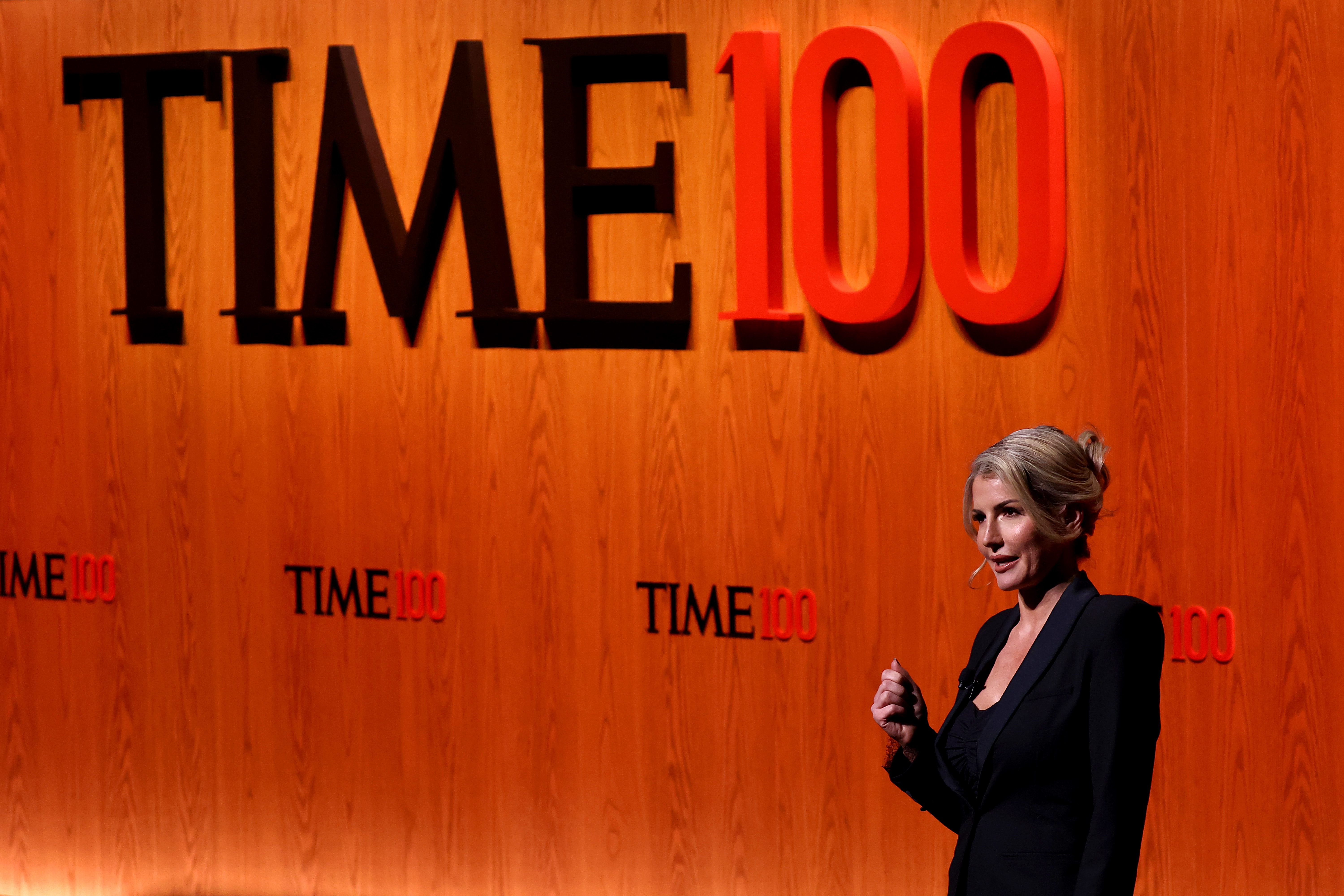
CEOs of start-ups and big tech companies spoke at the TIME100 Summit on Wednesday about innovating with artificial intelligence in an ethical way, just moments before a spirited debate on the future of the technology.
“Regulation and innovation are two sides of the same coin,” said Rosanne Kincaid-Smith, Group Chief Operating Officer of Northern Data Group, which is a signature partner of the TIME100 Summit. She added tech companies and industry leaders should work towards better regulation. “Not actively contributing through lobbying would be a huge miss for us,” she said.
[time-brightcove not-tgx=”true”]Kincaid-Smith stressed the benefits of AI and suggested that questions about whether AI is “evil” and going to negatively impact the workforce are misguided. “We forget to remind ourselves that Artificial Intelligence is artificial. It’s not natural…It’s an artifact of our own learning, of human culture, of human history…so it’s incumbent on us to make sure it reflects the best of us,” she said.
Justina Nixon-Saintil, Vice President and Chief Impact Officer of IBM, shared IBM is investing more resources into climate modeling. IBM is working with NASA to build an AI foundation model to improve the speed, accuracy and accessibility of weather forecasting.
Mathias Wikström, CEO of Doconomy, which gives banks financial tools to drive global climate action, stressed that climate literacy is key to achieving climate justice.
The TIME100 Summit convenes leaders from the global TIME100 community to spotlight solutions and encourage action toward a better world. This year’s summit features a variety of speakers across a diverse range of sectors, including politics, business, health and science, culture, and more.
Speakers for the 2024 TIME100 Summit include actor Elliot Page, designer Tory Burch, Olympic medalist Ibtihaj Muhammad, WNBA champion A’ja Wilson, author Margaret Atwood, NYSE president Lynn Martin, comedian Alex Edelman, professor Yoshua Bengio, 68th Secretary of State John Kerry, actor Jane Fonda, and many more.
The TIME100 Summit was presented by Booking.com, Citi, Merck, Northern Data Group, Glenfiddich Single Malt Scotch Whisky, and Verizon.
Source: Tech – TIME | 24 Apr 2024 | 8:34 pm
Source: BBC News - Technology | 5 Dec 2023 | 10:28 am
Source: BBC News - Technology | 5 Dec 2023 | 8:48 am
Source: BBC News - Technology | 5 Dec 2023 | 8:04 am
Source: BBC News - Technology | 5 Dec 2023 | 7:54 am
Source: BBC News - Technology | 5 Dec 2023 | 3:01 am
Source: BBC News - Technology | 4 Dec 2023 | 8:21 am
Source: BBC News - Technology | 4 Dec 2023 | 5:25 am
Source: BBC News - Technology | 4 Dec 2023 | 4:23 am
Source: BBC News - Technology | 3 Dec 2023 | 7:12 pm
Source: BBC News - Technology | 2 Dec 2023 | 6:56 pm
Source: Reuters: Technology News | 17 Jun 2020 | 11:37 pm
Source: Reuters: Technology News | 17 Jun 2020 | 8:05 pm
Source: Reuters: Technology News | 17 Jun 2020 | 6:43 pm
Source: Reuters: Technology News | 17 Jun 2020 | 6:03 pm
Source: Reuters: Technology News | 17 Jun 2020 | 5:33 pm
Source: Reuters: Technology News | 17 Jun 2020 | 5:31 pm
Source: Reuters: Technology News | 17 Jun 2020 | 5:01 pm
Source: Reuters: Technology News | 17 Jun 2020 | 4:47 pm
Source: Reuters: Technology News | 17 Jun 2020 | 2:39 pm
Source: Reuters: Technology News | 17 Jun 2020 | 12:48 pm
Source: Latest articles for ZDNet | 4 Apr 2018 | 3:48 am
Source: Latest articles for ZDNet | 4 Apr 2018 | 3:43 am
Source: Latest articles for ZDNet | 4 Apr 2018 | 2:03 am
Source: Latest articles for ZDNet | 4 Apr 2018 | 12:04 am
Source: Latest articles for ZDNet | 4 Apr 2018 | 12:00 am
Source: Latest articles for ZDNet | 3 Apr 2018 | 8:14 pm
Source: Latest articles for ZDNet | 3 Apr 2018 | 7:51 pm
Source: Latest articles for ZDNet | 3 Apr 2018 | 7:40 pm
Source: Latest articles for ZDNet | 3 Apr 2018 | 7:39 pm
Source: Latest articles for ZDNet | 3 Apr 2018 | 7:15 pm
Source: ComputerWeekly.com | 29 Mar 2018 | 1:15 pm
Source: ComputerWeekly.com | 29 Mar 2018 | 6:58 am
Source: ComputerWeekly.com | 29 Mar 2018 | 5:00 am
Source: ComputerWeekly.com | 29 Mar 2018 | 4:45 am
Source: ComputerWeekly.com | 29 Mar 2018 | 12:48 am
Source: ComputerWeekly.com | 29 Mar 2018 | 12:15 am
Source: ComputerWeekly.com | 28 Mar 2018 | 12:30 pm
Source: ComputerWeekly.com | 28 Mar 2018 | 9:30 am
Source: ComputerWeekly.com | 28 Mar 2018 | 8:30 am
Source: CNN.com - Technology | 18 Nov 2016 | 3:21 pm
Source: CNN.com - Technology | 18 Nov 2016 | 3:21 pm
Source: CNN.com - Technology | 18 Nov 2016 | 3:17 pm
Source: CNN.com - Technology | 18 Nov 2016 | 3:17 pm
Source: CNN.com - Technology | 17 Nov 2016 | 11:12 am
Source: CNN.com - Technology | 17 Nov 2016 | 11:07 am
Source: CNN.com - Technology | 16 Nov 2016 | 12:38 pm
Source: CNN.com - Technology | 11 Nov 2016 | 4:56 pm
Source: CNN.com - Technology | 11 Nov 2016 | 4:55 pm
Source: CNN.com - Technology | 8 Nov 2016 | 1:17 pm
Source: AustralianIT.com.au | IT News Top Stories | 15 Jun 2016 | 3:37 pm
Source: AustralianIT.com.au | IT News Top Stories | 15 Jun 2016 | 10:00 am
Source: AustralianIT.com.au | IT News Top Stories | 15 Jun 2016 | 10:00 am
Source: AustralianIT.com.au | IT News Top Stories | 15 Jun 2016 | 10:00 am
Source: AustralianIT.com.au | IT News Top Stories | 14 Jun 2016 | 9:01 pm
Source: AustralianIT.com.au | IT News Top Stories | 14 Jun 2016 | 2:55 pm
Source: AustralianIT.com.au | IT News Top Stories | 14 Jun 2016 | 10:00 am
Source: AustralianIT.com.au | IT News Top Stories | 14 Jun 2016 | 10:00 am
Source: AustralianIT.com.au | IT News Top Stories | 14 Jun 2016 | 10:00 am
Source: AustralianIT.com.au | IT News Top Stories | 14 Jun 2016 | 10:00 am